Intermediate Diving Sites
Intermediate Level Diving on Koh Tao
Once you have mastered the basics of diving and want to explore a little deeper and see a larger variety of marine life, you can head out to one of the numerous dive sites a little further from shore or to a site with more coral on the sea bed, rather than a predominantly sandy bottom. There are many dive sites on Koh Tao that fall into this category of being coral and marine life rich, while still shallow enough to dive without having to go too deep. The following sites are all in the surface to 20 metre depth range, which makes them perfect for certified divers, and for training dives on Open Water Diver courses.
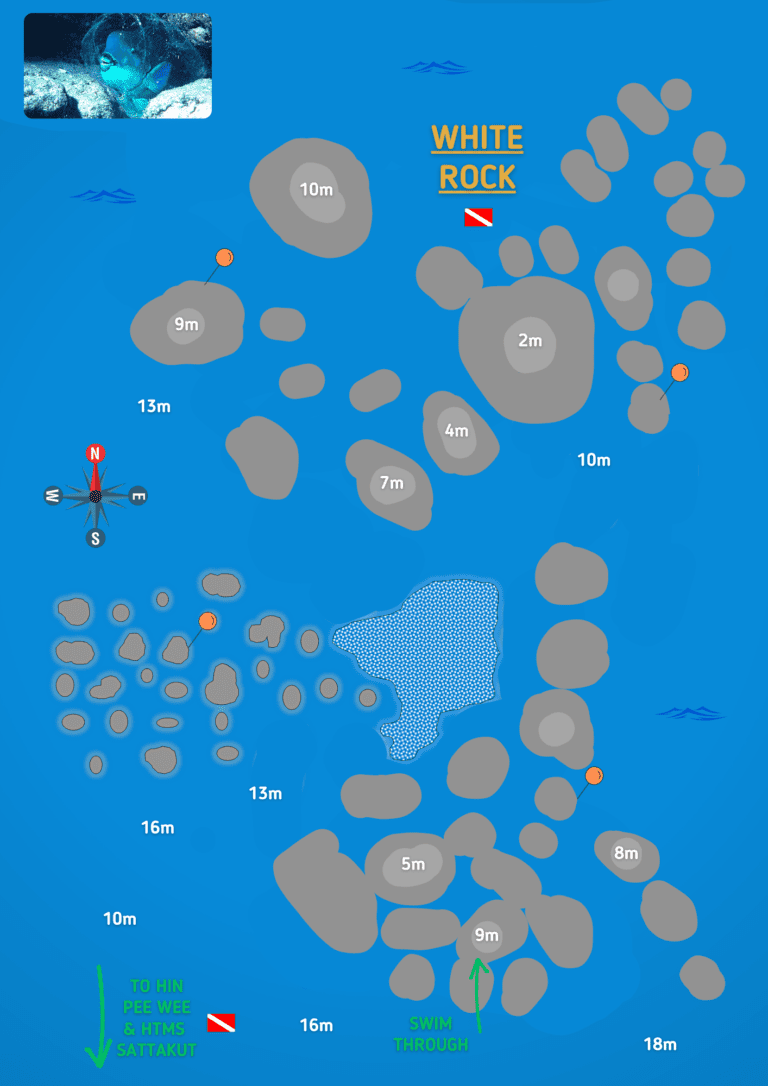
White Rock is one of the most popular intermediate level dive sites on Koh Tao and is a regular fixture on most dive centre schedules for fun diving and dive courses. It’s a very large dive site (around the size of a football pitch), so even though it can be busy, it’s easier for your dive leader to avoid other dive groups here than at some of the smaller dive sites. White Rock is home to almost every variety of coral and fish you could wish to see on Koh Tao, and is a regular hangout for turtles. This is a particularly great site for a night dive, where you’ll see hermit crabs and stingrays on the sand, and great barracuda patrolling the reef looking for a succulent rabbitfish for their evening meal.
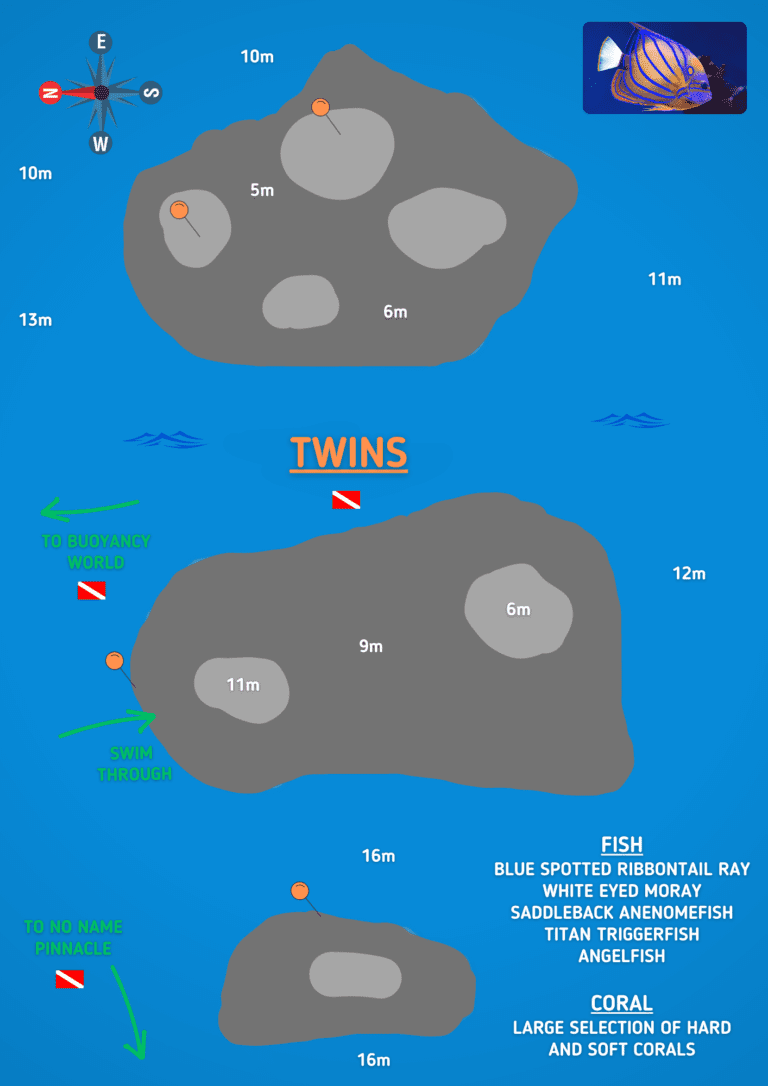
Another of Koh Tao’s most popular dive sites, Twins is located on the western side of Koh NangYuan Island and is home to an array of marine life at a very accommodating depth. The dive site comprises two sets of pinnacles separated by a stretch of sand (hence the name Twins). The reef itself is colourful and adorned with all the usual suspects when it comes to tropical fish, and just off the dive site there is a family of saddleback anemonefish (nemos!) on the sand. Be sure to check out all of the cracks, crevices, and overhangs, all of which are havens for stingrays, moray eels, pufferfish, and shrimp. There is an archways style swim-through beneath the deeper buoyline on the northern side of the dive site which is a fun way for divers to practise their buoyancy and positioning.
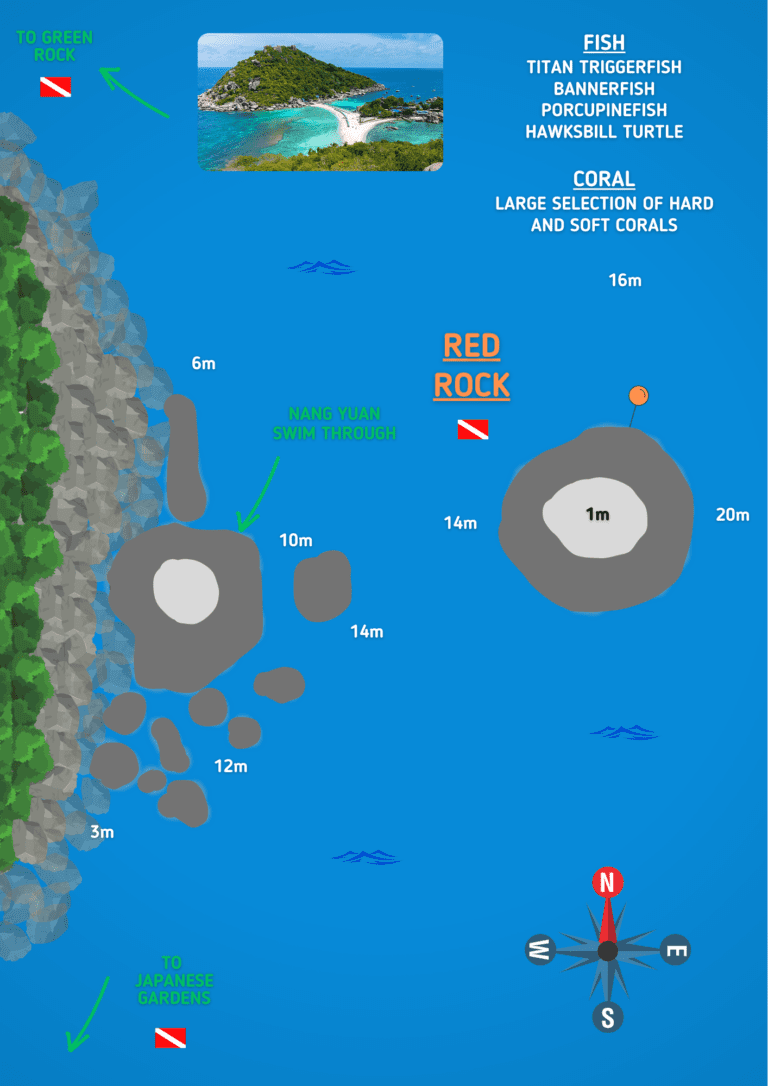
Red Rock is located on the eastern side of Koh NangYuan Island, and while Red Rock pinnacle itself is small and unassuming, a short swim over to the coastline provides access to a healthy wall of coral reef to explore. One of the major attractions at Red Rock is the large cavern style swim-through which is the longest of its kind on Koh Tao, and always a highlight for certified divers to explore (overhead environments are forbidden on most dive courses). There is plenty to see on the reef too though, including rare pink-tailed triggerfish, nudibranchs and sometimes a turtle. Many dive centres schedule a ‘Red Rock Drop’ for fun divers when they are headed to Japenese Gardens, as it allows customers to explore both the coastline and the bay on the same dive.
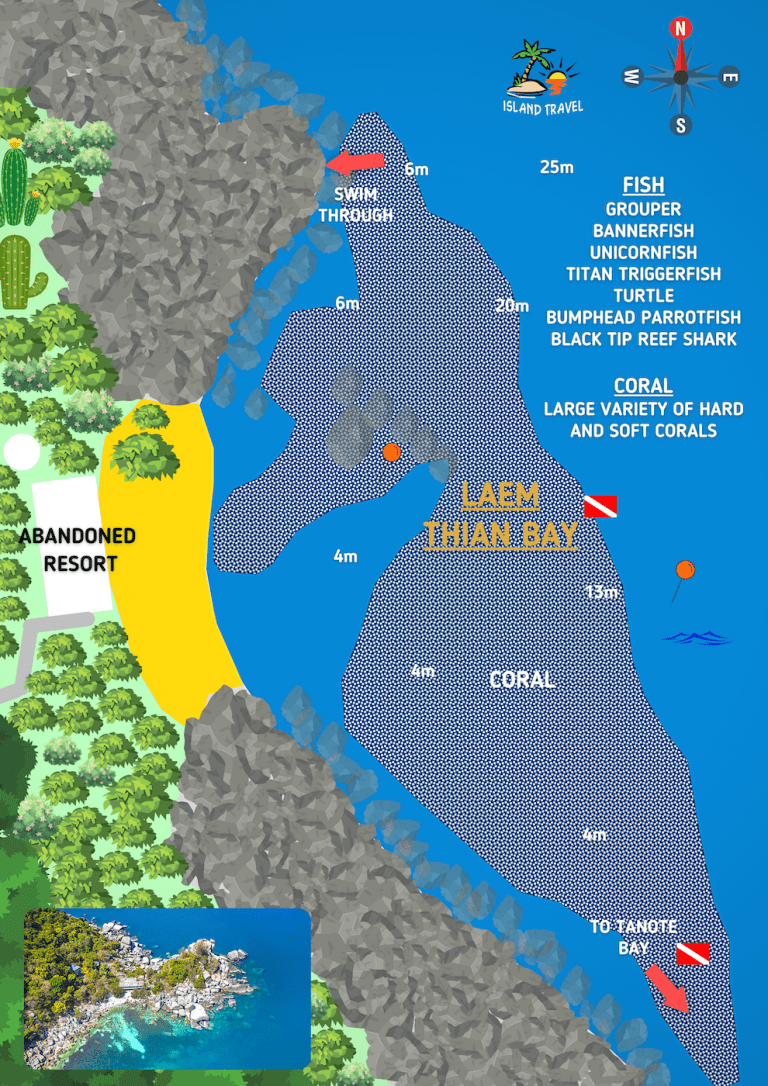
There is a pretty beach at Laem Thian and an old abandoned resort that make it a popular spot to visit by land for those who like to go hiking, but there is plenty to see underwater too! The beach gives way to coral reef very quickly so there is not much of a sandy bottom for skills training, but as a wall dive, it’s perfect for divers who want to explore a healthy reef and see lots of marine life. With a variety of hard and soft corals, including some impressive fan formations and a garden of whip coral a little deeper, Laem Thian Bay is home to scores of fish including a school of butterflyfish (normally only seensingularly or in pairs), groupers, bannerfish, scribbled filefish, and perhaps even a passing turtle. There can sometimes be a current at this dive site, which is one of the factors that makes it more suitable to intermediate divers rather than complete beginners.
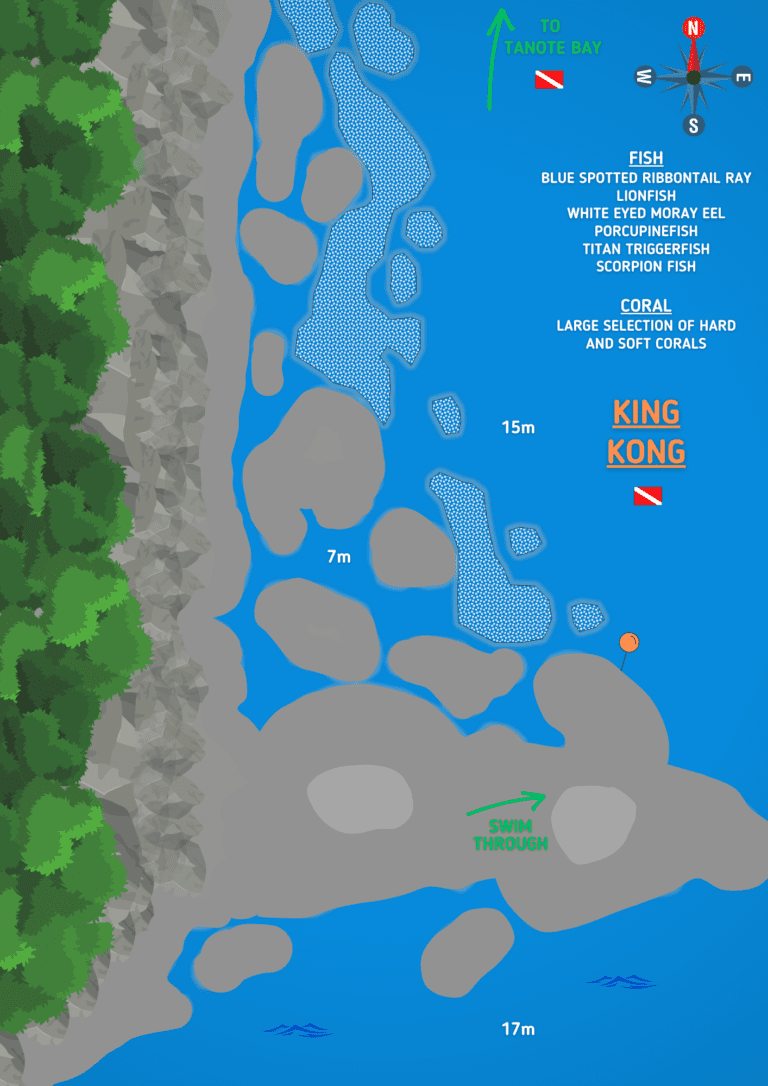
This rocky boulder site on the coastline just north of Aow Leuk Bay is quite different in topography to most other Koh Tao dive sites. Its many boulders and overhangs make it a great place to see stingrays, pufferfish and moray eels, while on the wall of the reef the array of hard and soft corals are perfect homes for groupers, parrotfish, and rabbitfish. King Kong is dived rarely and as a result is a great dive site for spotting rarer fish, such as unicornfish and singular bannerfish (the most common species of bannerfish on Koh Tao is the longfin bannerfish).
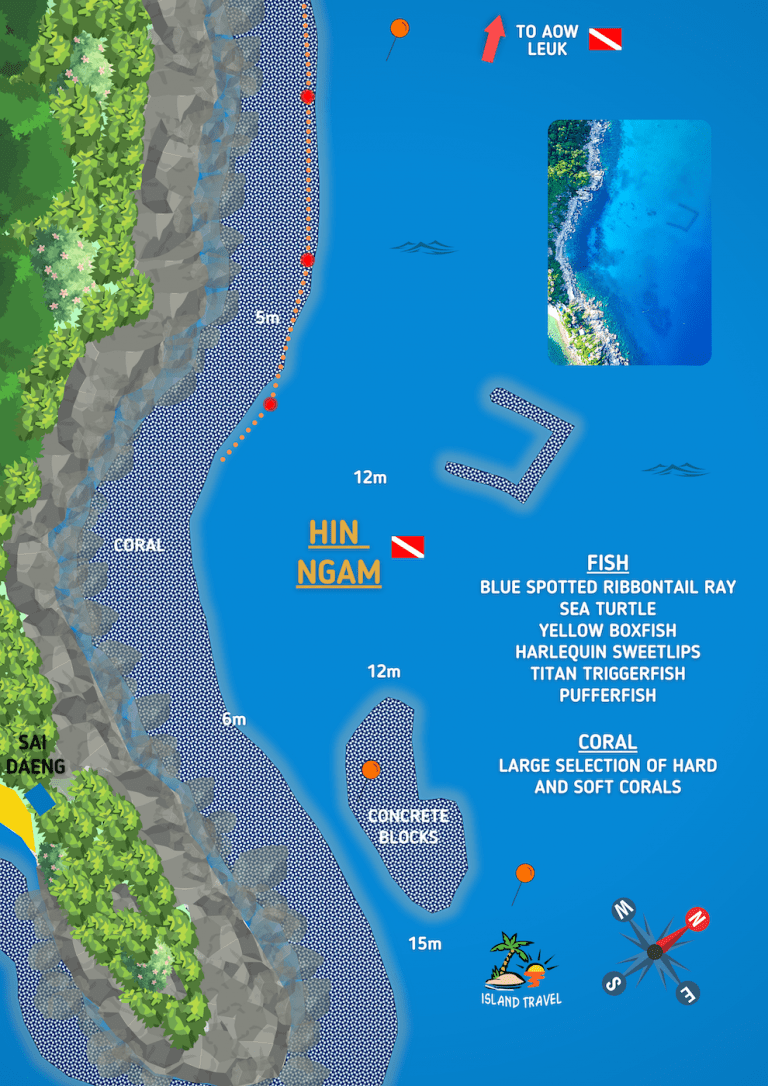
The rocky coastline that forms Hin Ngam dive site is located on the southeastern coast of Koh Tao, between Aow Leuk Bay and Shark Island. Underwater, the bay comprises an expanse of sand but there is no beach, so is more ideally suited to skills sessions for Advanced Diver courses or Rescue Diver scenarios than for Open Water Diver training. There are numerous coral bommies dispersed across the sandy bottom that provide homes to frogfish, scorpionfish, and nudibranchs, while the boulders along the wall are home to many coral formations and the many ledges and crevices are perfect hiding spots for stingrays, moray eels, and pufferfish, as well as the usual colourful reef dwellers.
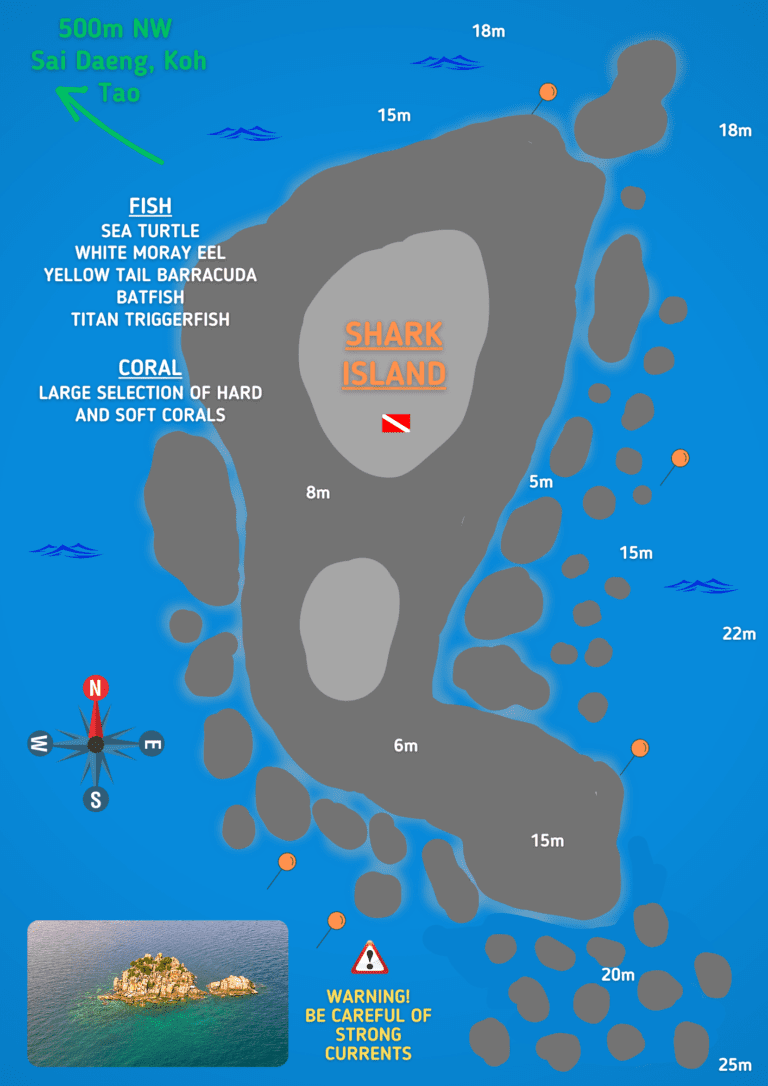
On a day with minimal current and good visibility, you’d struggle to find a more appealing site in this category than Shark Island. Carpet corals stretch out as far as the eye can see, fan corals protrude from the rocky boulders and pinnacles, and whip corals stretch up from the sea bed. Marine life is varied and plentiful. You’ll see schools of batfish, barracuda, and butterflyfish (normally only seen singularly or in pairs), plenty of nudibranchs, and perhaps also some of the lesser spotted fish like unicornfish and pink-tailed triggerfish, as well as the more common tropical fish varieties. There can often be a current at Shark Island so careful dive planning is required, which is why this site is more suited to intermediate divers and above.
Full maps / fish I.D book the "Koh Tao Dive Guide" is available at Dive Supply